

| Company : Croisi Europe |
| Ship : MS La Belle de Cadix |
| Journey Start : հնգ 05 հնս 2025 |
| Journey End : հնգ 12 հնս 2025 |
| Count Nights : 7 nights |
| Day | Date | Port | Arrival | Departure |
|---|---|---|---|---|
| 1 | 5.06 հնգ | Սևիլիա / Spain | 18:00 | |
| 2 | 6.06 ուր | Սևիլիա / Spain | ||
| 3 | 7.06 շբթ | Սևիլիա / Spain | 13:00 | |
| 3 | 7.06 շբթ | ISLA MINIMA | 15:30 | 17:30 |
| 3 | 7.06 շբթ | Էլ Պուերտո դե Սանտա Մարիա / Spain | 23:59 | |
| 4 | 8.06 կիր | Էլ Պուերտո դե Սանտա Մարիա / Spain | 14:00 | |
| 4 | 8.06 կիր | Կադիս / Spain | 15:00 | 23:30 |
| 5 | 9.06 երկ | Հուելվա / Spain | 20:00 | |
| 6 | 10.06 երք | Հուելվա / Spain | 12:30 | |
| 6 | 10.06 երք | Սևիլիա / Spain | 22:00 | |
| 7 | 11.06 չրք | Սևիլիա / Spain | ||
| 8 | 12.06 հնգ | Սևիլիա / Spain | 09:00 |
All inclusive on board
THE CROISIEUROPE DIFFERENCE
All meals included - DRINKS INCLUDED with meals and at the bar
Refined French cuisine - Gala dinner and evening - Welcome cocktail
Free Wi-Fi onboard
Headsets are included for excursions
Official welcome from the captain and crew
Onboard activities
Travel assistance and repatriation insurance
All port fees included
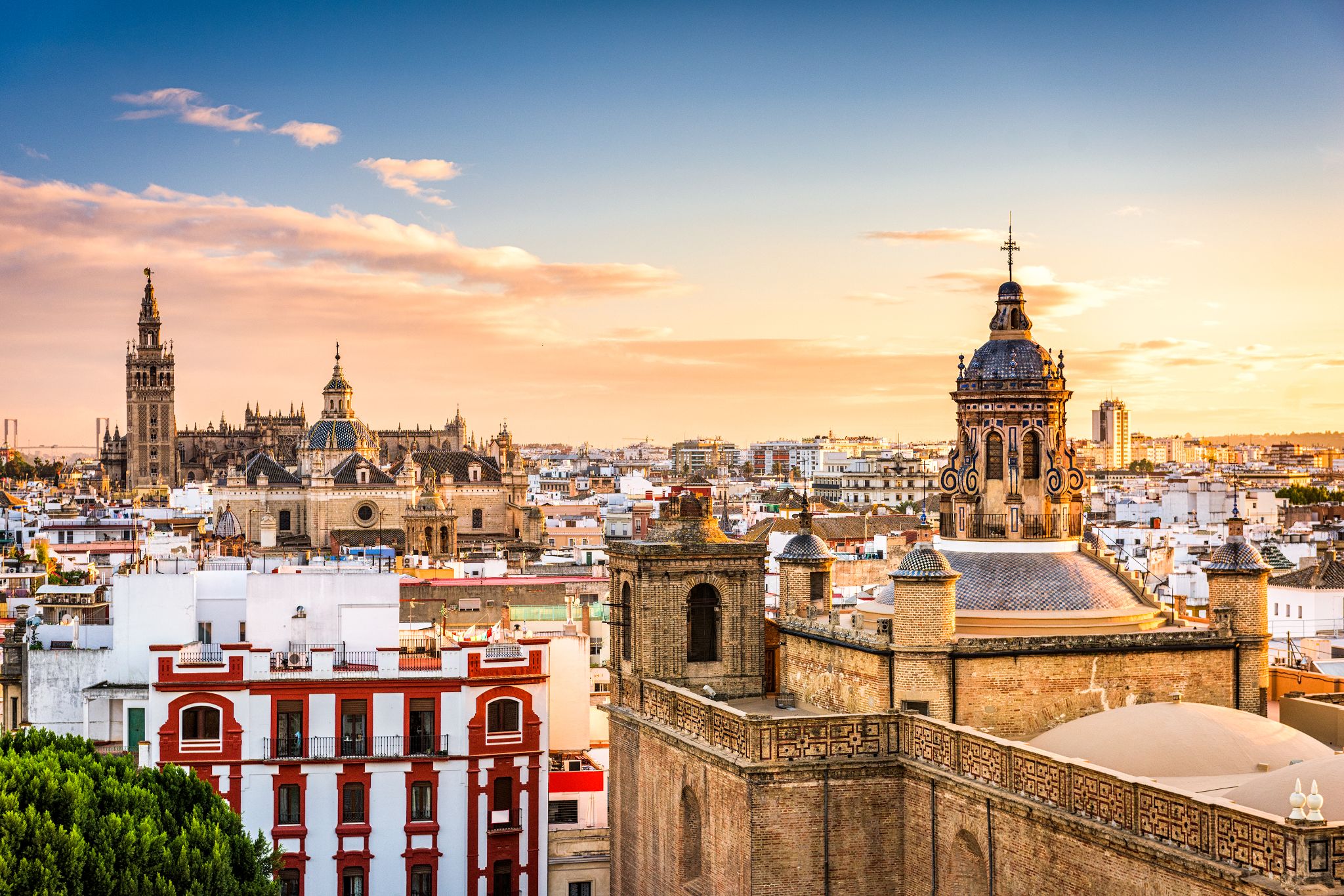
Seville is the capital and largest city of the autonomous community of Andalusia and the province of Seville, Spain. It is situated on the plain of the river Guadalquivir. The inhabitants of the city are known as sevillanos (feminine form: sevillanas) or hispalenses, after the Roman name of the city, Hispalis. Seville has a municipal population of about 690,000 as of 2016, and a metropolitan population of about 1.5 million, making it the fourth-largest city in Spain and the 30th most populous municipality in the European Union. Its Old Town, with an area of 4 square kilometres (2 sq mi), contains three UNESCO World Heritage Sites: the Alcázar palace complex, the Cathedral and the General Archive of the Indies. The Seville harbour, located about 80 kilometres (50 miles) from the Atlantic Ocean, is the only river port in Spain. Seville is also the hottest major metropolitan area in the geographical Southwestern Europe, with summer average high temperatures of above 35 °C (95 °F).
Seville was founded as the Roman city of Hispalis. It later became known as Ishbiliyya after the Muslim conquest in 712. During the Muslim rule in Spain, Seville came under the jurisdiction of the Caliphate of Córdoba before becoming the independent Taifa of Seville; later it was ruled by the Muslim Almoravids and the Almohads until finally being incorporated into the Christian Kingdom of Castile under Ferdinand III in 1248. After the discovery of the Americas, Seville became one of the economic centres of the Spanish Empire as its port monopolised the trans-oceanic trade and the Casa de Contratación (House of Trade) wielded its power, opening a Golden Age of arts and literature. In 1519, Ferdinand Magellan departed from Seville for the first circumnavigation of the Earth. Coinciding with the Baroque period of European history, the 17th century in Seville represented the most brilliant flowering of the city's culture; then began a gradual economic and demographic decline as silting in the Guadalquivirforced the trade monopoly to relocate to the nearby port of Cádiz.
The 20th century in Seville saw the tribulations of the Spanish Civil War, decisive cultural milestones such as the Ibero-American Exposition of 1929 and Expo '92, and the city's election as the capital of the Autonomous Community of Andalusia.

Seville is the capital and largest city of the autonomous community of Andalusia and the province of Seville, Spain. It is situated on the plain of the river Guadalquivir. The inhabitants of the city are known as sevillanos (feminine form: sevillanas) or hispalenses, after the Roman name of the city, Hispalis. Seville has a municipal population of about 690,000 as of 2016, and a metropolitan population of about 1.5 million, making it the fourth-largest city in Spain and the 30th most populous municipality in the European Union. Its Old Town, with an area of 4 square kilometres (2 sq mi), contains three UNESCO World Heritage Sites: the Alcázar palace complex, the Cathedral and the General Archive of the Indies. The Seville harbour, located about 80 kilometres (50 miles) from the Atlantic Ocean, is the only river port in Spain. Seville is also the hottest major metropolitan area in the geographical Southwestern Europe, with summer average high temperatures of above 35 °C (95 °F).
Seville was founded as the Roman city of Hispalis. It later became known as Ishbiliyya after the Muslim conquest in 712. During the Muslim rule in Spain, Seville came under the jurisdiction of the Caliphate of Córdoba before becoming the independent Taifa of Seville; later it was ruled by the Muslim Almoravids and the Almohads until finally being incorporated into the Christian Kingdom of Castile under Ferdinand III in 1248. After the discovery of the Americas, Seville became one of the economic centres of the Spanish Empire as its port monopolised the trans-oceanic trade and the Casa de Contratación (House of Trade) wielded its power, opening a Golden Age of arts and literature. In 1519, Ferdinand Magellan departed from Seville for the first circumnavigation of the Earth. Coinciding with the Baroque period of European history, the 17th century in Seville represented the most brilliant flowering of the city's culture; then began a gradual economic and demographic decline as silting in the Guadalquivirforced the trade monopoly to relocate to the nearby port of Cádiz.
The 20th century in Seville saw the tribulations of the Spanish Civil War, decisive cultural milestones such as the Ibero-American Exposition of 1929 and Expo '92, and the city's election as the capital of the Autonomous Community of Andalusia.

Seville is the capital and largest city of the autonomous community of Andalusia and the province of Seville, Spain. It is situated on the plain of the river Guadalquivir. The inhabitants of the city are known as sevillanos (feminine form: sevillanas) or hispalenses, after the Roman name of the city, Hispalis. Seville has a municipal population of about 690,000 as of 2016, and a metropolitan population of about 1.5 million, making it the fourth-largest city in Spain and the 30th most populous municipality in the European Union. Its Old Town, with an area of 4 square kilometres (2 sq mi), contains three UNESCO World Heritage Sites: the Alcázar palace complex, the Cathedral and the General Archive of the Indies. The Seville harbour, located about 80 kilometres (50 miles) from the Atlantic Ocean, is the only river port in Spain. Seville is also the hottest major metropolitan area in the geographical Southwestern Europe, with summer average high temperatures of above 35 °C (95 °F).
Seville was founded as the Roman city of Hispalis. It later became known as Ishbiliyya after the Muslim conquest in 712. During the Muslim rule in Spain, Seville came under the jurisdiction of the Caliphate of Córdoba before becoming the independent Taifa of Seville; later it was ruled by the Muslim Almoravids and the Almohads until finally being incorporated into the Christian Kingdom of Castile under Ferdinand III in 1248. After the discovery of the Americas, Seville became one of the economic centres of the Spanish Empire as its port monopolised the trans-oceanic trade and the Casa de Contratación (House of Trade) wielded its power, opening a Golden Age of arts and literature. In 1519, Ferdinand Magellan departed from Seville for the first circumnavigation of the Earth. Coinciding with the Baroque period of European history, the 17th century in Seville represented the most brilliant flowering of the city's culture; then began a gradual economic and demographic decline as silting in the Guadalquivirforced the trade monopoly to relocate to the nearby port of Cádiz.
The 20th century in Seville saw the tribulations of the Spanish Civil War, decisive cultural milestones such as the Ibero-American Exposition of 1929 and Expo '92, and the city's election as the capital of the Autonomous Community of Andalusia.
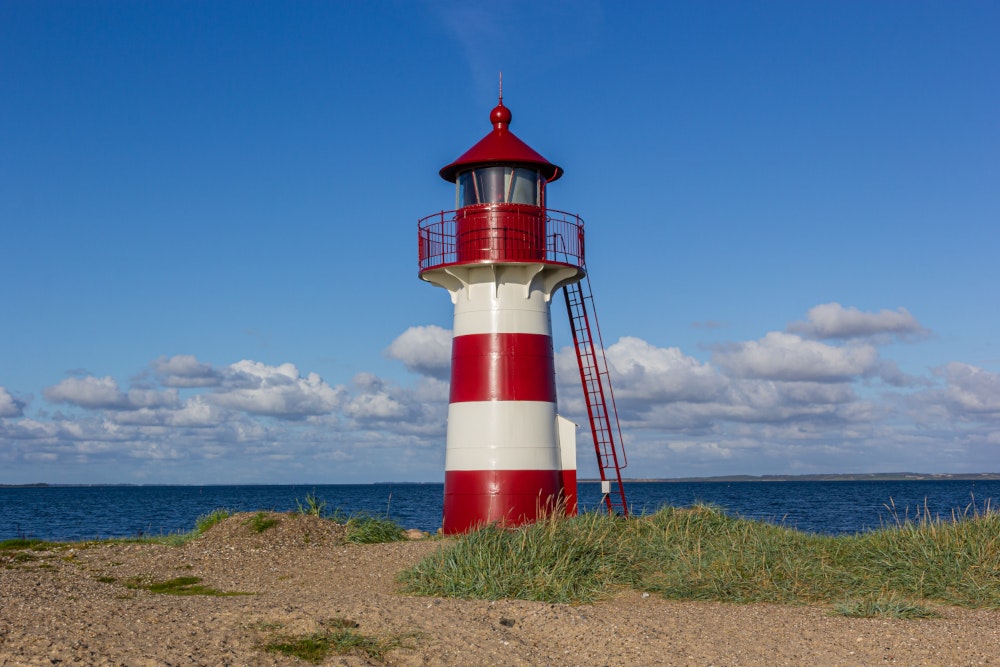
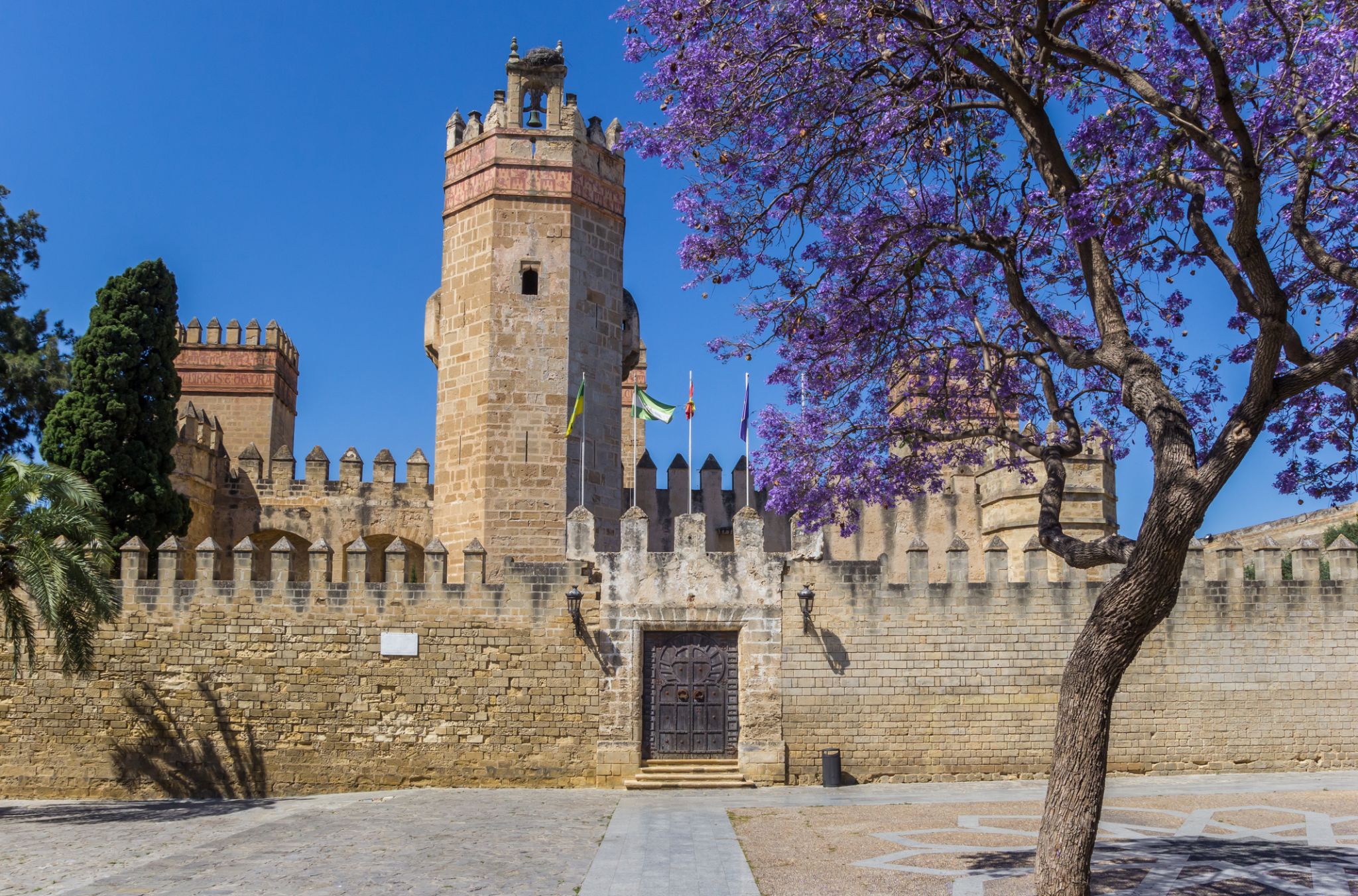

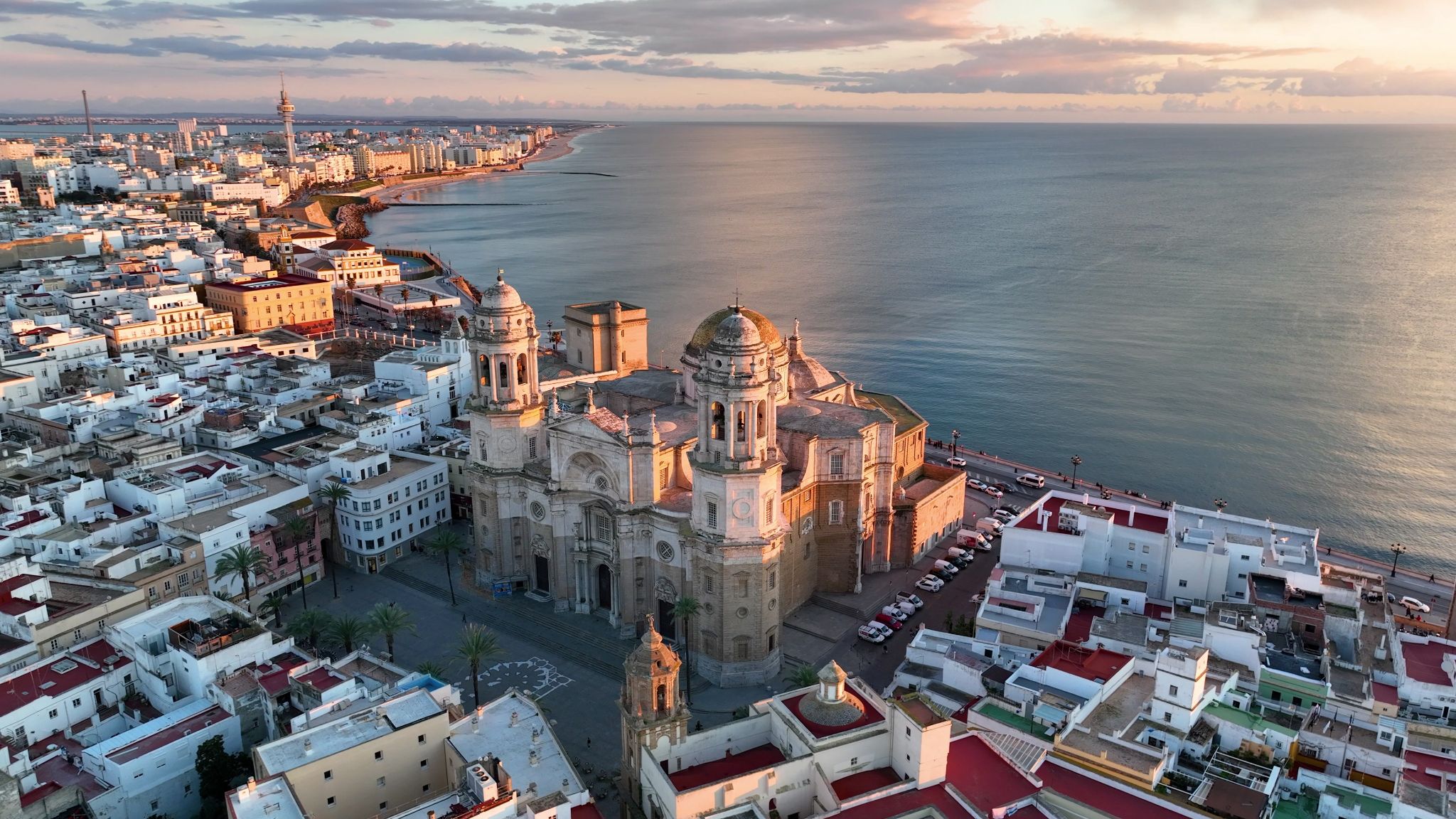
Կադիսը Եվրոպայի ամենահին քաղաքներից մեկն է, որը գտնվում է Իսպանիայի հարավարևմտյան ափին, Անդալուսիայի կենտրոնում: Քաղաքը գտնվում է կղզում, շրջապատված է Ատլանտյան օվկիանոսով, ինչը հաղորդում է այն բացառիկ մթնոլորտ: Կադիսը հայտնի է իր գեղեցիկ լողափերով, ինչպիսիք են Playa de la Victoria-ը, ինչպես նաև իր հնագույն փողոցներով՝ սպիտակ տներում և շքեղ ֆասադներով, որոնք հիշեցնում են մավրիտանական և գաղութային պատմություն: Քաղաքի պատմական կենտրոնում գտնվում է հանրահայտ կաթեդրալը, որի շինարարությունը տևել է ավելի քան հարյուր տարի, և որի գագաթից բացվում է փայլուն տեսարան օվկիանոսին:
Քաղաքը նաև հայտնի է իր կարմիր ավանդույթներով և համեղ խոհանոցով, որտեղ գերիշխում են ծովամթերքները: Այստեղյան կարմիր ավանդույթը համարվում է Իսպանիայում ամենաառողջներից մեկը, որը ամեն տարի գրավում է հազարավոր զբոսաշրջիկներ:
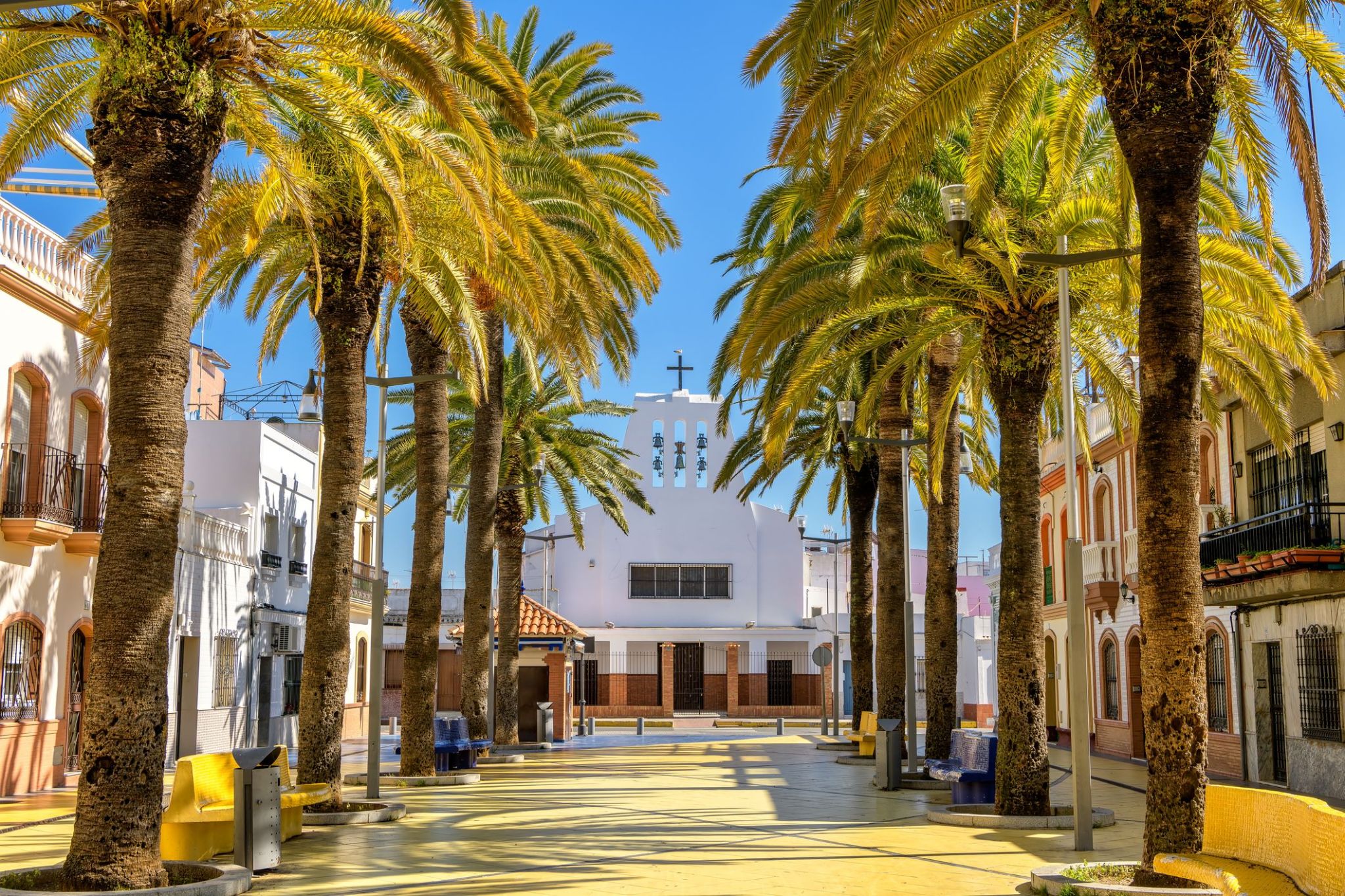
Ուելվան Իսպանիայի հարավարևմտյան ափին գտնվող քաղաք է, Տինտո գետի ափին, հեռու չէ Ատլանտյան օվկիանոսից: Ապահովելով իր պատմական նշանակությունը՝ այն եղել է կարևոր նավահանգիստ Մեծ երկրաբառության ժամանակներում, և այստեղից է Քրիստոֆոր Կոլումբոս մեկնարկել իր պատմական ճամփորդությունը: Այսօր Ուելվան գրավում է զբոսաշրջիկներին ոչ միայն իր պատմությամբ, այլ նաև մառախուղներով բնապատկերներով: Քաղաքի շուրջ տարածված են գեղեցիկ ափերը, ինչպես նաև եզակի բնական պահեստներ, օրինակ՝ Դոնյանա ազգային պարկը, որը բնակվում է հազվագյուտ թռչունների և կենդանիների բազմաթիվ տեսակներով:
Բացի այդ, Ուելվան հայտնի է իր մշակույթով և ավանդույթներով: Քաղաքը հայտնի է իր փառատոներով, այդ թվում նաև հայտնի ֆլամենկո փառատոնով, որը ամեն տարի գրավում է հազարավոր զբոսաշրջիկների: Ուելվայում կարելի է նաև վայելել տեղական գերազանց խոհանոցը, հատկապես ծովամթերքները, որոնք մանավանդ նոր են քաղաքը ափին գտնվելու շնորհիվ: Քաղաքի ճարտարապետությունը՝ նեղ փողոցներով և հին շենքերով, ստեղծում է բացառիկ մթնոլորտ, որը թույլ է տալիս զգալ հին Իսպանիայի ոգին:

Ուելվան Իսպանիայի հարավարևմտյան ափին գտնվող քաղաք է, Տինտո գետի ափին, հեռու չէ Ատլանտյան օվկիանոսից: Ապահովելով իր պատմական նշանակությունը՝ այն եղել է կարևոր նավահանգիստ Մեծ երկրաբառության ժամանակներում, և այստեղից է Քրիստոֆոր Կոլումբոս մեկնարկել իր պատմական ճամփորդությունը: Այսօր Ուելվան գրավում է զբոսաշրջիկներին ոչ միայն իր պատմությամբ, այլ նաև մառախուղներով բնապատկերներով: Քաղաքի շուրջ տարածված են գեղեցիկ ափերը, ինչպես նաև եզակի բնական պահեստներ, օրինակ՝ Դոնյանա ազգային պարկը, որը բնակվում է հազվագյուտ թռչունների և կենդանիների բազմաթիվ տեսակներով:
Բացի այդ, Ուելվան հայտնի է իր մշակույթով և ավանդույթներով: Քաղաքը հայտնի է իր փառատոներով, այդ թվում նաև հայտնի ֆլամենկո փառատոնով, որը ամեն տարի գրավում է հազարավոր զբոսաշրջիկների: Ուելվայում կարելի է նաև վայելել տեղական գերազանց խոհանոցը, հատկապես ծովամթերքները, որոնք մանավանդ նոր են քաղաքը ափին գտնվելու շնորհիվ: Քաղաքի ճարտարապետությունը՝ նեղ փողոցներով և հին շենքերով, ստեղծում է բացառիկ մթնոլորտ, որը թույլ է տալիս զգալ հին Իսպանիայի ոգին:

Seville is the capital and largest city of the autonomous community of Andalusia and the province of Seville, Spain. It is situated on the plain of the river Guadalquivir. The inhabitants of the city are known as sevillanos (feminine form: sevillanas) or hispalenses, after the Roman name of the city, Hispalis. Seville has a municipal population of about 690,000 as of 2016, and a metropolitan population of about 1.5 million, making it the fourth-largest city in Spain and the 30th most populous municipality in the European Union. Its Old Town, with an area of 4 square kilometres (2 sq mi), contains three UNESCO World Heritage Sites: the Alcázar palace complex, the Cathedral and the General Archive of the Indies. The Seville harbour, located about 80 kilometres (50 miles) from the Atlantic Ocean, is the only river port in Spain. Seville is also the hottest major metropolitan area in the geographical Southwestern Europe, with summer average high temperatures of above 35 °C (95 °F).
Seville was founded as the Roman city of Hispalis. It later became known as Ishbiliyya after the Muslim conquest in 712. During the Muslim rule in Spain, Seville came under the jurisdiction of the Caliphate of Córdoba before becoming the independent Taifa of Seville; later it was ruled by the Muslim Almoravids and the Almohads until finally being incorporated into the Christian Kingdom of Castile under Ferdinand III in 1248. After the discovery of the Americas, Seville became one of the economic centres of the Spanish Empire as its port monopolised the trans-oceanic trade and the Casa de Contratación (House of Trade) wielded its power, opening a Golden Age of arts and literature. In 1519, Ferdinand Magellan departed from Seville for the first circumnavigation of the Earth. Coinciding with the Baroque period of European history, the 17th century in Seville represented the most brilliant flowering of the city's culture; then began a gradual economic and demographic decline as silting in the Guadalquivirforced the trade monopoly to relocate to the nearby port of Cádiz.
The 20th century in Seville saw the tribulations of the Spanish Civil War, decisive cultural milestones such as the Ibero-American Exposition of 1929 and Expo '92, and the city's election as the capital of the Autonomous Community of Andalusia.

Seville is the capital and largest city of the autonomous community of Andalusia and the province of Seville, Spain. It is situated on the plain of the river Guadalquivir. The inhabitants of the city are known as sevillanos (feminine form: sevillanas) or hispalenses, after the Roman name of the city, Hispalis. Seville has a municipal population of about 690,000 as of 2016, and a metropolitan population of about 1.5 million, making it the fourth-largest city in Spain and the 30th most populous municipality in the European Union. Its Old Town, with an area of 4 square kilometres (2 sq mi), contains three UNESCO World Heritage Sites: the Alcázar palace complex, the Cathedral and the General Archive of the Indies. The Seville harbour, located about 80 kilometres (50 miles) from the Atlantic Ocean, is the only river port in Spain. Seville is also the hottest major metropolitan area in the geographical Southwestern Europe, with summer average high temperatures of above 35 °C (95 °F).
Seville was founded as the Roman city of Hispalis. It later became known as Ishbiliyya after the Muslim conquest in 712. During the Muslim rule in Spain, Seville came under the jurisdiction of the Caliphate of Córdoba before becoming the independent Taifa of Seville; later it was ruled by the Muslim Almoravids and the Almohads until finally being incorporated into the Christian Kingdom of Castile under Ferdinand III in 1248. After the discovery of the Americas, Seville became one of the economic centres of the Spanish Empire as its port monopolised the trans-oceanic trade and the Casa de Contratación (House of Trade) wielded its power, opening a Golden Age of arts and literature. In 1519, Ferdinand Magellan departed from Seville for the first circumnavigation of the Earth. Coinciding with the Baroque period of European history, the 17th century in Seville represented the most brilliant flowering of the city's culture; then began a gradual economic and demographic decline as silting in the Guadalquivirforced the trade monopoly to relocate to the nearby port of Cádiz.
The 20th century in Seville saw the tribulations of the Spanish Civil War, decisive cultural milestones such as the Ibero-American Exposition of 1929 and Expo '92, and the city's election as the capital of the Autonomous Community of Andalusia.

Seville is the capital and largest city of the autonomous community of Andalusia and the province of Seville, Spain. It is situated on the plain of the river Guadalquivir. The inhabitants of the city are known as sevillanos (feminine form: sevillanas) or hispalenses, after the Roman name of the city, Hispalis. Seville has a municipal population of about 690,000 as of 2016, and a metropolitan population of about 1.5 million, making it the fourth-largest city in Spain and the 30th most populous municipality in the European Union. Its Old Town, with an area of 4 square kilometres (2 sq mi), contains three UNESCO World Heritage Sites: the Alcázar palace complex, the Cathedral and the General Archive of the Indies. The Seville harbour, located about 80 kilometres (50 miles) from the Atlantic Ocean, is the only river port in Spain. Seville is also the hottest major metropolitan area in the geographical Southwestern Europe, with summer average high temperatures of above 35 °C (95 °F).
Seville was founded as the Roman city of Hispalis. It later became known as Ishbiliyya after the Muslim conquest in 712. During the Muslim rule in Spain, Seville came under the jurisdiction of the Caliphate of Córdoba before becoming the independent Taifa of Seville; later it was ruled by the Muslim Almoravids and the Almohads until finally being incorporated into the Christian Kingdom of Castile under Ferdinand III in 1248. After the discovery of the Americas, Seville became one of the economic centres of the Spanish Empire as its port monopolised the trans-oceanic trade and the Casa de Contratación (House of Trade) wielded its power, opening a Golden Age of arts and literature. In 1519, Ferdinand Magellan departed from Seville for the first circumnavigation of the Earth. Coinciding with the Baroque period of European history, the 17th century in Seville represented the most brilliant flowering of the city's culture; then began a gradual economic and demographic decline as silting in the Guadalquivirforced the trade monopoly to relocate to the nearby port of Cádiz.
The 20th century in Seville saw the tribulations of the Spanish Civil War, decisive cultural milestones such as the Ibero-American Exposition of 1929 and Expo '92, and the city's election as the capital of the Autonomous Community of Andalusia.